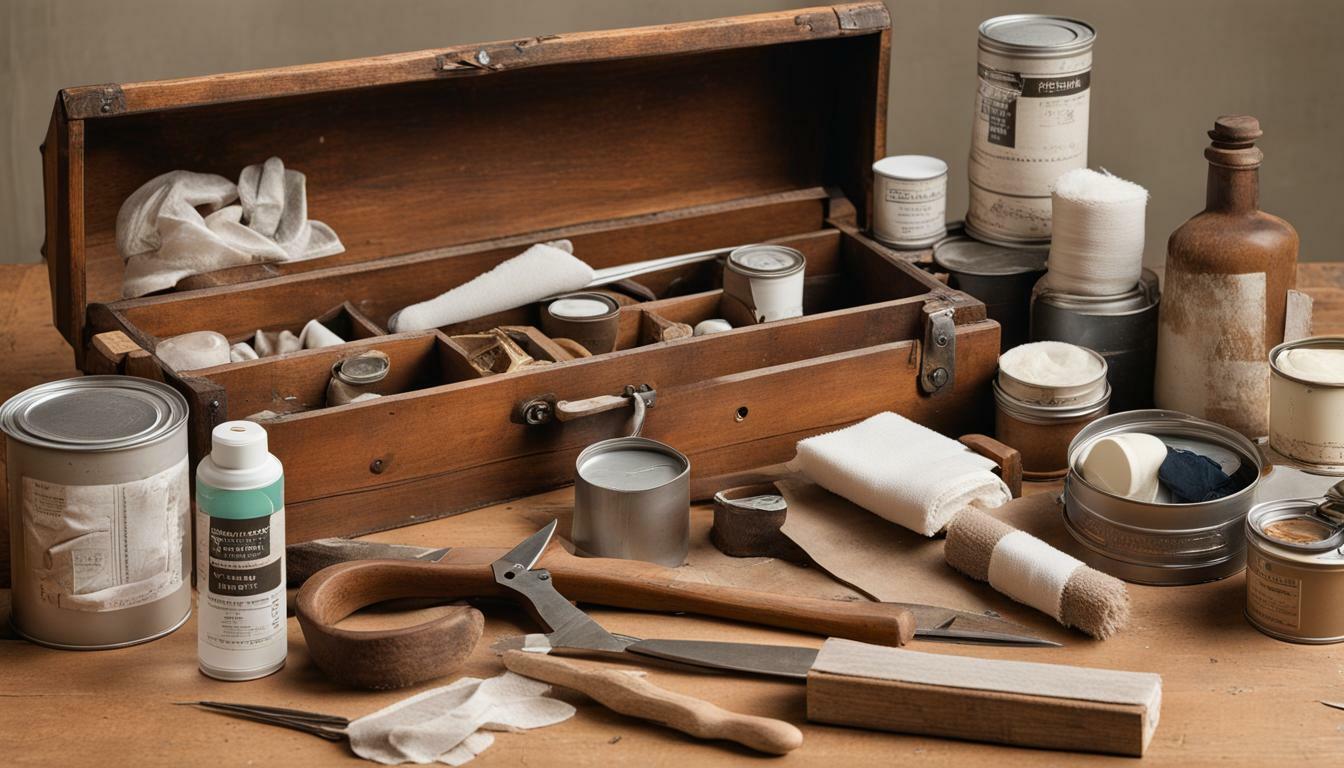Welcome to our article about DIY safety for restoration projects. As a historical home restorer, you know the importance of taking precautionary measures before starting any renovation work. Safety comes first, and it is essential to ensure that you are properly equipped to handle any unexpected situation. That’s where DIY first aid kits come in handy.
Working on historical homes comes with its own set of unique challenges and risks. It’s crucial to have a first aid kit tailored to the specific needs of historical home restorers. In this article, we’ll guide you through the essential components of a DIY first aid kit for historical home restorers, as well as provide tips on maintaining and updating the kit.
Whether you’re an experienced restoration expert or just starting with your first project, this article is for you. We’ll cover everything from understanding the risks of historical home restoration to choosing the right first aid supplies for your restoration project. With our guidance, you’ll be able to create a DIY first aid kit that meets your specific needs and helps ensure your safety during restoration work.
Understanding the Risks of Historical Home Restoration
Historical home restoration projects can be incredibly rewarding, allowing you to breathe new life into a piece of history. However, these projects can also pose significant risks to the safety of the restorer.
One of the main reasons for this is that historical homes were typically built before modern safety regulations were put in place. This means that the materials used, the structure of the building, and the methods of construction can all present unique safety challenges that modern homes do not.
For example, it is not uncommon for historical homes to have lead paint, asbestos, or other hazardous materials lurking beneath the surface. Restorers may also encounter weakened or unstable structures, such as rotting floorboards or crumbling masonry, which can pose a serious danger if not handled correctly.
Another aspect to consider is that historical home restorers often work on elevated surfaces, such as roofs, ladders, or scaffolding. Falls from height can be fatal, and it is essential that restorers use appropriate safety equipment to minimize their risk.
These are just a few examples of the potential risks that historical home restorers face. It is important to recognize these risks and take steps to mitigate them, including the use of appropriate safety equipment and the implementation of proper safety protocols.
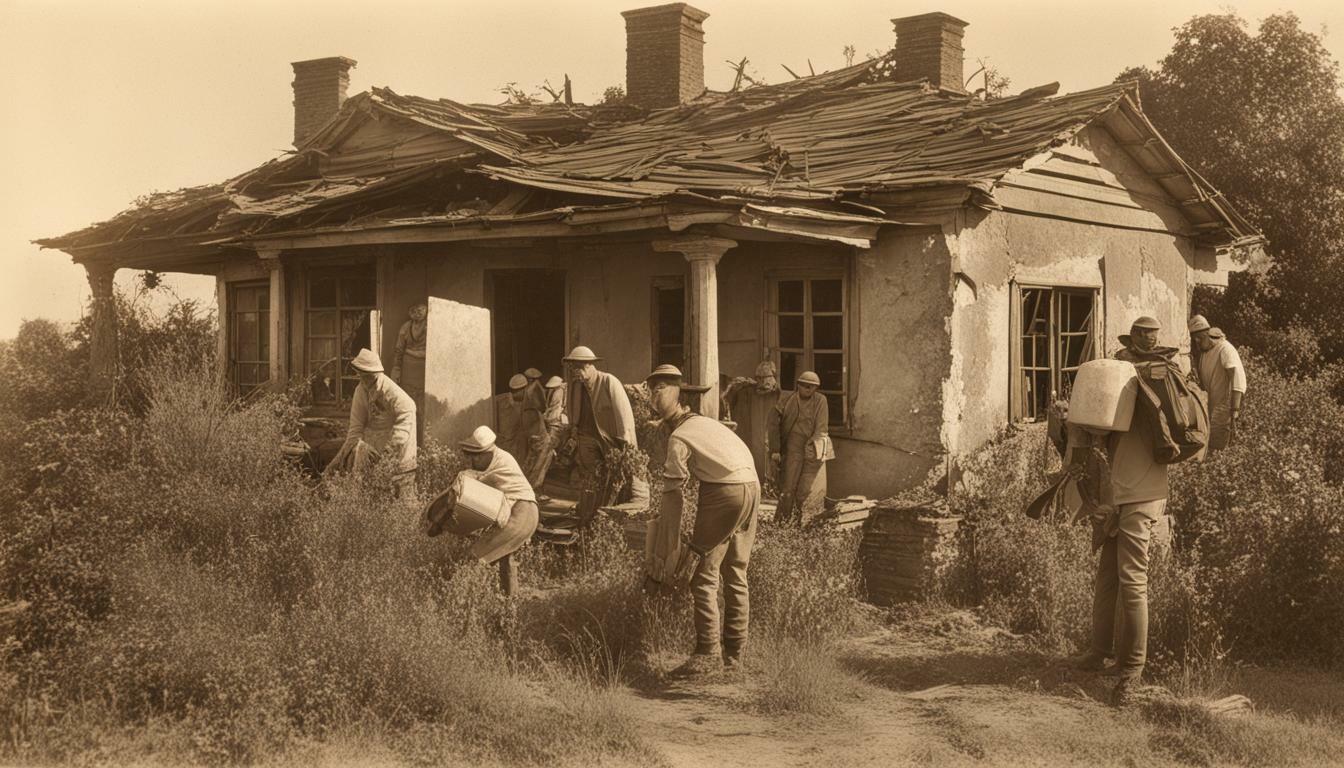
In the next section, we will discuss some of the essential safety equipment that historical home restorers should have in place to protect themselves during restoration projects.
The Essential Components of a DIY First Aid Kit for Historical Home Restorers
When restoring historical homes, it is crucial to have a first aid kit on hand. Injuries can happen at any time, and having the right supplies readily available can make all the difference. Here are the essential components you should include in your DIY first aid kit for historical home restorers:
| First Aid Supplies | Restoration Tools |
|---|---|
|
|
It’s important to include not only first aid supplies but also restoration tools that may be needed in case of an emergency. For example, protective gloves, goggles, and masks are essential when handling hazardous materials such as lead paint or asbestos.
Additionally, a multi-tool with pliers and wire cutters can be a lifesaver when working with wires or cables that may need to be cut in an emergency. Having a portable first aid kit that includes all the essential supplies will also allow you to respond quickly to any injuries that may occur.
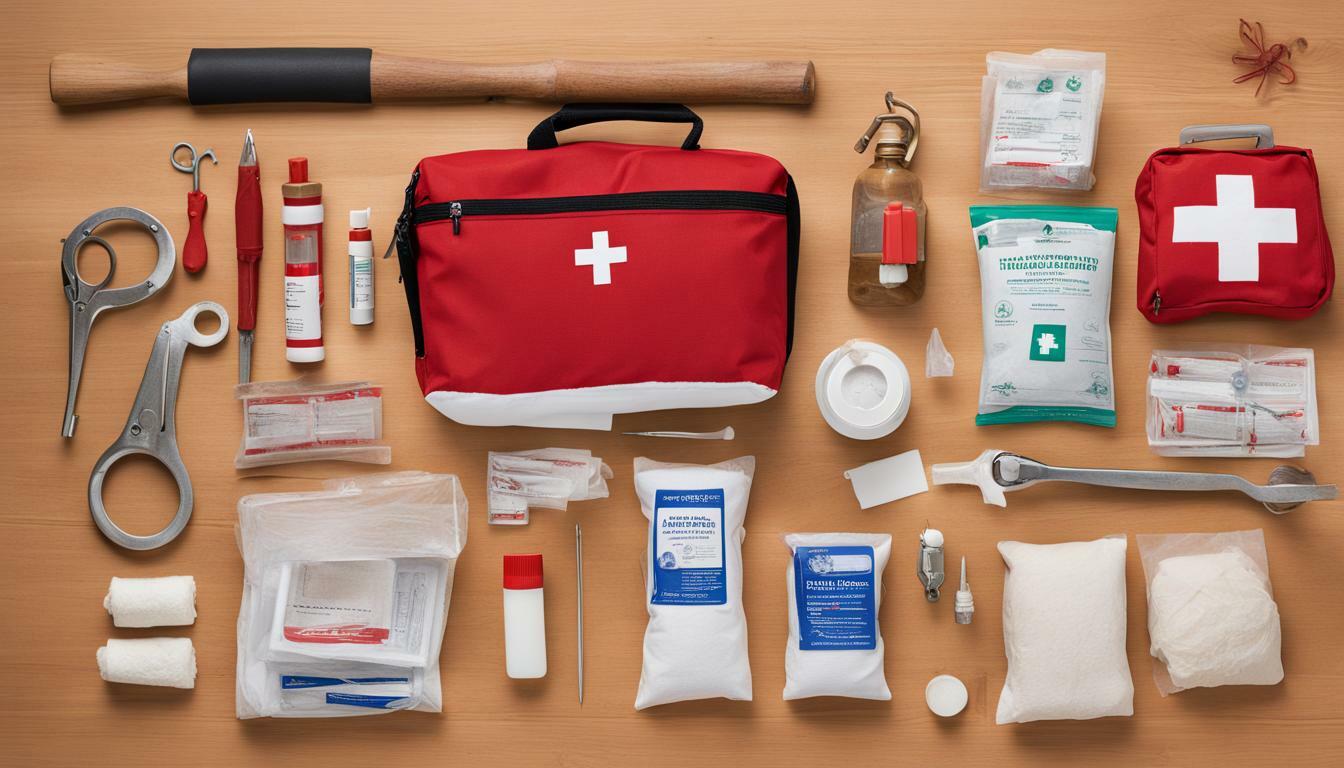
Overall, having a well-stocked DIY first aid kit for historical home restorers is essential for ensuring safety during restoration projects. By including all the necessary supplies and restoration tools, you can be confident that you are prepared for any injuries or accidents that may occur.
Choosing the Right First Aid Supplies for Historical Home Restoration
When it comes to selecting first aid supplies for restoration projects, it is important to keep in mind the types of injuries or accidents that are common in historical home restorations. From minor cuts and burns to more severe injuries like broken bones, a DIY first aid kit for historical home restorers should include supplies that can address a range of potential hazards.
Here are some essential first aid supplies to consider including in your DIY historical home restoration first aid kit:
| First Aid Supplies | Restoration Tools |
|---|---|
|
|
Additionally, it is important to consider any specific tools that may be needed for a particular restoration project. For example, if working with sharp or heavy tools, it may be wise to include a tourniquet or quick clotting agent in case of severe bleeding.
It is also important to note that historical home restorers may have unique needs when it comes to first aid supplies. For example, if working with lead paint or asbestos, it may be necessary to include additional respiratory protection in the kit.
By carefully selecting the right first aid supplies for your restoration projects, you can ensure that you are prepared to handle any potential injuries or accidents that may arise. Remember to regularly check and replenish your kit to ensure that it remains up-to-date and effective.

DIY Safety Tips for Historical Home Restorers
Undertaking a historical home restoration project can be a rewarding experience, but it also comes with potential risks that should not be ignored. By following these DIY safety tips, you can ensure that you are taking the necessary precautions to protect yourself during the restoration process.
1. Wear the Right Protective Gear
Protective gear is crucial when working on a restoration project in order to prevent injuries from sharp or heavy objects, harmful chemicals, or other hazards. Wear a hard hat, work gloves, safety glasses, and a dust mask to shield yourself from injury and dust particles.
2. Use Tools with Care
Make sure you are familiar with how to use restoration tools properly and safely. Read the manufacturer’s instructions carefully before using any new tools, and follow them closely. Always keep your hands and fingers clear of the tool’s moving parts, and never force a tool when it is not working correctly.
3. Be Mindful of Potential Hazards
Take note of any potential hazards in the restoration area, such as uneven flooring, exposed electrical wiring, or loose debris. Be sure to keep your work area tidy and free of clutter to prevent any accidents from occurring.
4. Take Regular Breaks
Working on a restoration project can be physically demanding, so it is important to take regular breaks to avoid exhaustion and to remain alert. Taking short breaks can also help you to stay focused on the task at hand.
5. Have a First Aid Kit on Hand
Accidents and injuries can happen unexpectedly during a restoration project. That’s why it is essential to have a well-stocked DIY first aid kit on hand at all times. Keep your kit in a readily accessible location and ensure that it contains all necessary supplies for common injuries or accidents that may occur during restoration projects.
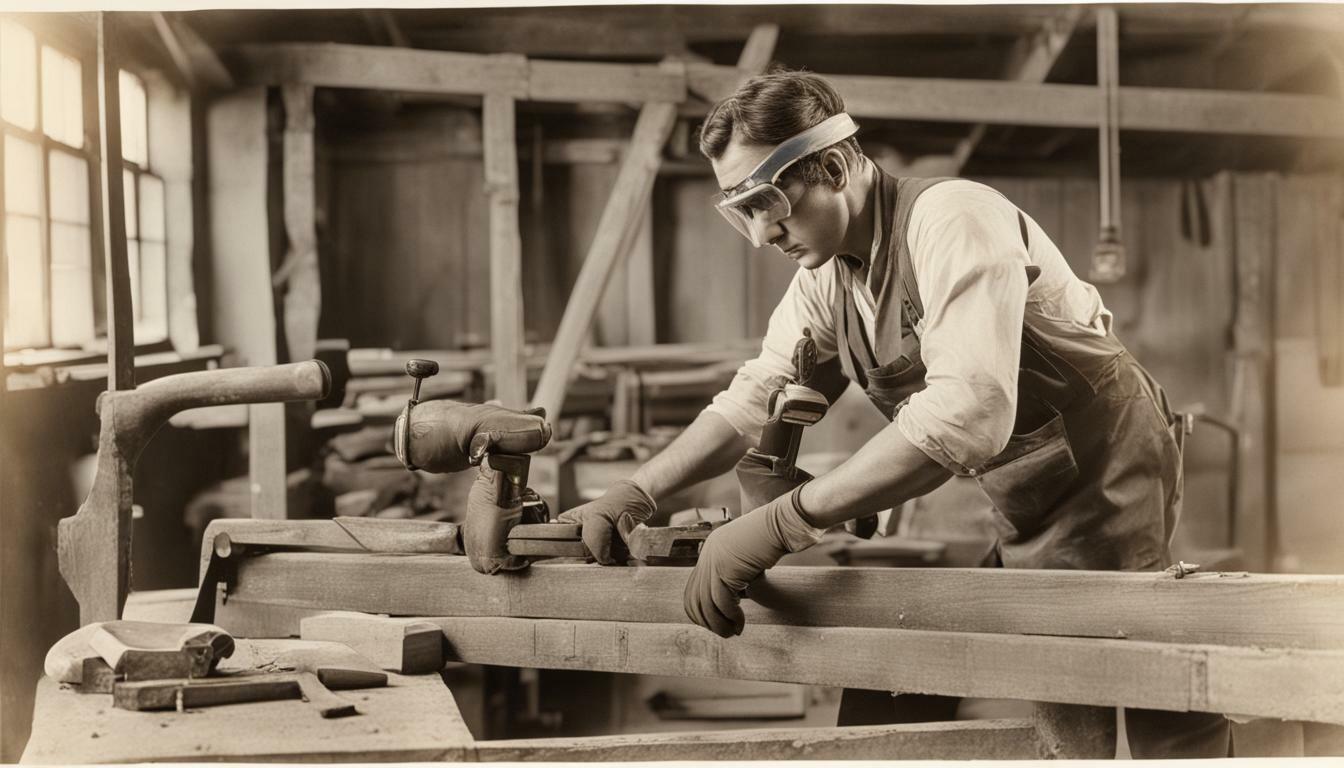
Tip: If you’re not sure which first aid supplies you need in your kit, check out our article on “The Essential Components of a DIY First Aid Kit for Historical Home Restorers”.
By following these simple DIY safety tips, you can create a safer environment for yourself as you tackle your historical home restoration project.
Where to Find DIY First Aid Kits for Historical Home Restorers in the UK
When it comes to finding DIY first aid kits for historical home restorers in the UK, there are several options to consider. Many retailers specialize in safety equipment for restoration projects and offer a range of first aid kits specifically designed for DIY enthusiasts. For example, Screwfix, Toolstation, and B&Q are popular home improvement stores that offer a variety of DIY safety kits and first aid supplies.
If you prefer to shop online, Amazon UK also has a wide selection of DIY first aid kits that cater to different types of restoration projects. You can easily browse through the different options and compare prices to find the best deal and most suitable kit for your needs. Simply search for “DIY first aid kits” or “restoration first aid kits” to get started.
Another option to consider is sourcing your DIY first aid kit from a specialist first-aid supplier. St John Ambulance and First Aid Warehouse are two such suppliers that offer comprehensive first aid kits designed for specific needs and situations. They often include additional supplies such as burn dressings and eye wash solutions, which may be particularly useful for historical home restorers.
Ultimately, the best place to find a DIY first aid kit for historical home restorers will depend on your personal preferences and the specific needs of your restoration project. Whether you choose to shop in-store or online, be sure to carefully review the contents of each kit and ensure that it includes all the necessary supplies to keep you safe and prepared during your restoration work.
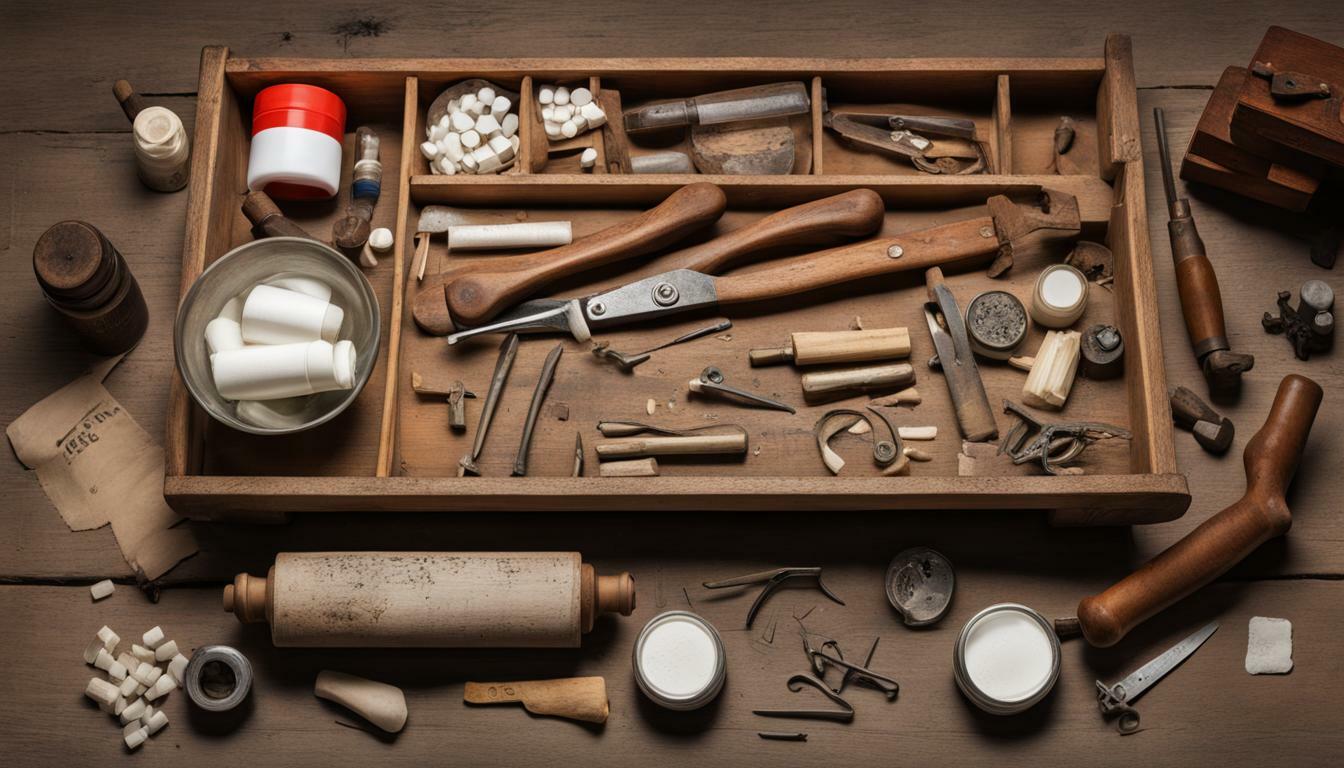
The Benefits of Using DIY First Aid Kits for Historical Home Restorers
If you’re a historical home restorer in the UK, you know that safety is paramount when undertaking restoration projects. Accidents and injuries can happen, which is why it’s crucial to have the right safety equipment on hand, including a DIY first aid kit specifically designed for restoration work.
These kits offer a range of benefits for historical home restorers:
- Immediate access to essential supplies: With a DIY first aid kit, you’ll have everything you need to treat minor injuries or accidents that may occur during restoration work. This can save time and prevent further harm.
- Prompt response to injuries or accidents: Having a first aid kit on hand means you can respond quickly to any injuries or accidents that occur. This can help to minimize the impact of the incident and ensure that the affected person receives prompt care.
- Contributes to overall project safety: By being well-prepared with a DIY first aid kit, you can help to promote safety and prevent accidents from happening in the first place. This can create a safer working environment for everyone involved in the restoration project.
- Peace of mind: Knowing that you have a fully stocked first aid kit on hand can provide peace of mind when undertaking restoration work. You’ll feel more confident and reassured, knowing that you’re well-prepared for any potential accidents or incidents.
Overall, investing in a DIY first aid kit for historical home restoration projects is an essential step for ensuring safety and peace of mind. With the right supplies on hand, you’ll be well-equipped to handle any potential injuries or accidents that may occur during your restoration work.
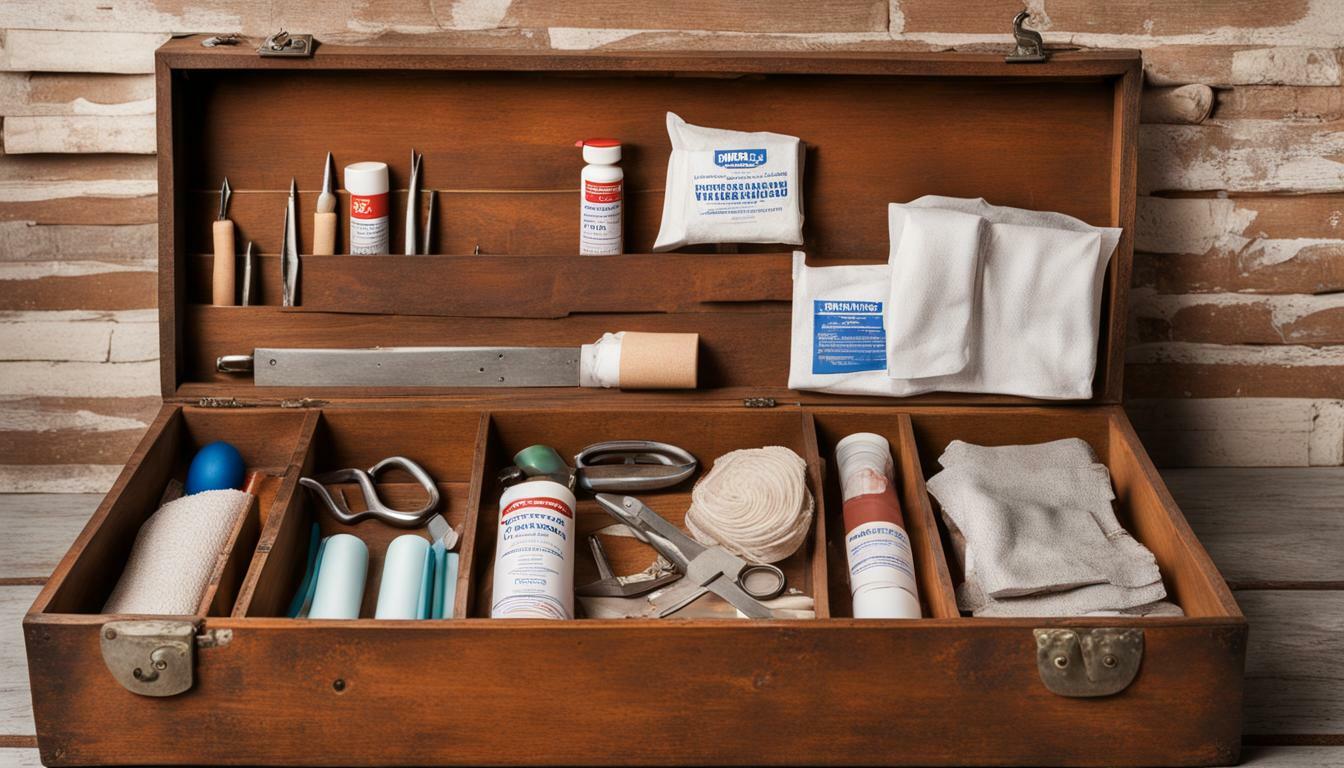
DIY Safety Training for Historical Home Restorers
If you’re embarking on a historical home restoration project, it’s crucial to have the right knowledge and skills to ensure your safety. DIY safety training is essential to equip you with the necessary tools to identify potential hazards, assess risks, and take appropriate safety measures.
DIY safety training courses are available in the UK and cover a range of topics, including first aid, safety protocols, and risk assessment. These courses are tailored specifically to restoration projects, ensuring that you gain the knowledge and skills you need to safely and effectively carry out your restoration work.
| Benefits of DIY Safety Training for Historical Home Restorers: |
|---|
| 1. First Aid: Learn how to administer first aid in the event of an injury or accident. |
| 2. Safety Protocols: Understand the importance of following safety protocols and procedures in restoration work. |
| 3. Risk Assessment: Gain the knowledge and skills to identify potential hazards and assess risks associated with restoration projects. |
| 4. Specific Considerations: Learn about safety considerations unique to historical home restoration, such as working with lead paint and asbestos. |
DIY safety training is an investment in your safety and the safety of those around you. By gaining the necessary knowledge and skills, you can carry out your restoration work with confidence and peace of mind.

Remember, in addition to DIY safety training, it’s important to have a DIY first aid kit specifically designed for historical home restorers. These kits can provide immediate access to the essential supplies you need to address injuries or accidents that may occur during your restoration work.
Maintaining and Updating Your DIY First Aid Kit for Historical Home Restorers
Now that you have assembled your DIY first aid kit for historical home restorers, it’s essential to ensure that it remains up-to-date and adequately stocked. Regular maintenance of your first aid kit can help ensure that you have the necessary supplies on hand to deal with any injuries or accidents that may occur during restoration projects.
Firstly, it’s crucial to check your first aid kit regularly to ensure that none of the supplies have expired or gone bad. Any expired items should be removed and replaced with fresh supplies. It’s also essential to restock any supplies that have been used or taken from the kit.
Secondly, you need to evaluate the type of restoration projects you are undertaking and ensure that your first aid kit contains the necessary supplies. For example, if you are working with power tools, it’s crucial to have supplies such as bandages, gauze, and antiseptic wipes to treat any cuts or wounds.
First Aid Supplies Checklist
| Item | Quantity |
|---|---|
| Adhesive bandages (assorted sizes) | 20 |
| Gauze pads (assorted sizes) | 10 |
| Adhesive tape | 1 roll |
| Scissors | 1 pair |
| Tweezers | 1 pair |
| Disposable gloves | 2 pairs |
| Antiseptic wipes | 10 |
| Pain relievers (e.g. aspirin) | 10 tablets |
| Instant cold pack | 1 |
| Flashlight | 1 |
As you can see, the essential components of a DIY first aid kit for historical home restorers are relatively simple, yet incredibly effective. With the right supplies on hand, you can rest assured that you are well-prepared to handle any potential injuries or accidents that may occur during restoration projects.
Remember, your safety is of the utmost importance. So, take the time to maintain and update your DIY first aid kit regularly and always wear appropriate safety gear when working on restoration projects.
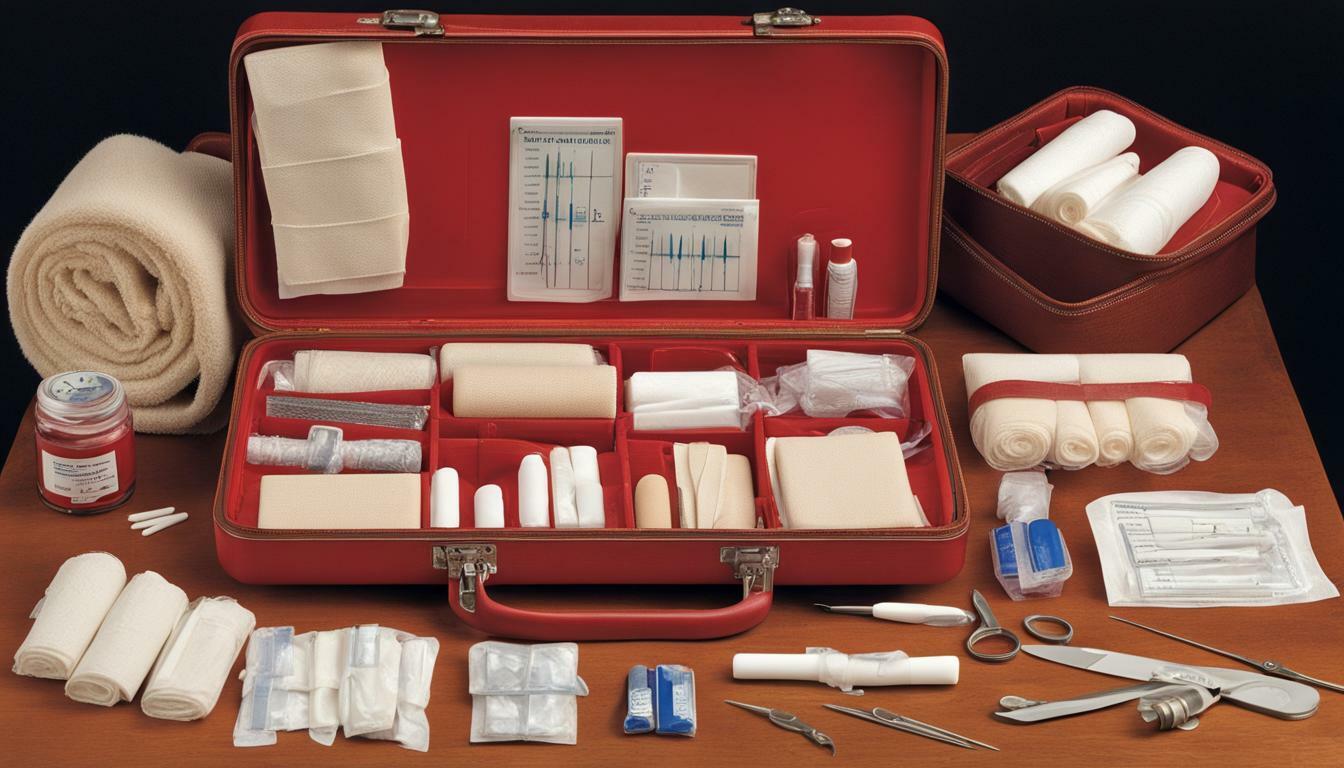
DIY First Aid Kits for Historical Home Restorers: Real-Life Stories
Using a DIY first aid kit specifically designed for historical home restoration can make a significant difference in ensuring the safety of restorers. Here are some real-life stories of historical home restorers who have shared their experiences using DIY first aid kits:
“I was working on a restoration project that involved removing old, rusty nails from wooden beams. In the process, I accidentally hit my finger with a hammer. Thankfully, I had my DIY first aid kit nearby and was able to clean the wound and apply a bandage in no time. It saved me a trip to the hospital and allowed me to continue with the project without any further delay.”
John’s story highlights the importance of having a first aid kit nearby, especially when working with potentially dangerous tools.
“As a historical home restorer, I’m always cautious about safety. However, accidents can happen, and I did have a minor cut on my hand while working on a project. I was relieved to have my DIY first aid kit, which not only had the necessary supplies but was also compact enough to carry around during the project. It made me feel more confident about continuing with my restoration work.”
Sarah’s experience shows that having a portable first aid kit can be extremely useful, especially when working on larger restoration projects.
These stories demonstrate that DIY first aid kits can be a valuable asset for historical home restorers, providing prompt access to necessary supplies and ensuring safety while working on restoration projects.

Conclusion: Ensuring Safety in Historical Home Restoration with DIY First Aid Kits
In conclusion, ensuring safety in historical home restoration projects is of utmost importance. As a historical home restorer, it’s crucial to keep in mind the unique risks involved in these projects and take necessary precautions to protect yourself. DIY first aid kits designed for historical home restorers can play a significant role in this regard.
By having a well-stocked first aid kit on hand, you can quickly and effectively respond to any injuries or accidents that may occur during restoration work. These kits should include essential supplies such as bandages, antiseptics, and pain relievers, as well as any specific tools required for restoration projects.
It’s also essential to practice DIY safety and take necessary precautions while working on historical home restoration projects. This includes wearing protective gear, using tools correctly, and being mindful of potential hazards. Additionally, maintaining and updating your DIY first aid kit regularly is crucial to ensure that it remains suitable for the types of restoration projects being undertaken.
Overall, using DIY first aid kits for historical home restorers can help prevent injuries and ensure overall project safety. By taking the necessary steps to protect yourself, you can fully enjoy the process of restoring historical homes. So don’t forget to pack your DIY first aid kit before you dive into your next restoration project!
